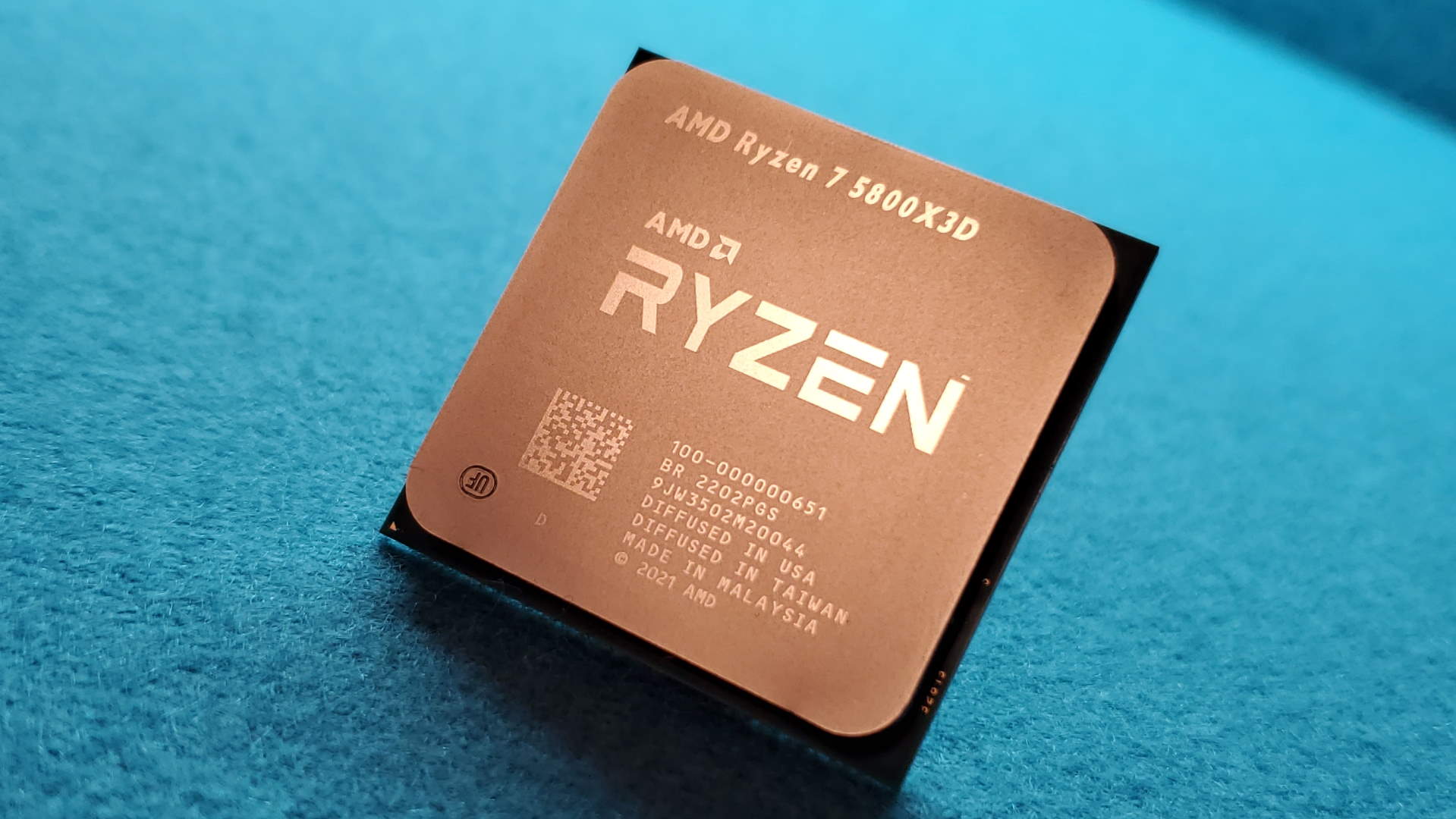Our Verdict
A technically impressive processor and a fitting epitaph for the AM4 era of AMD's Ryzen CPUs. But the 'fastest gaming CPU' is a moniker which serves marketing people more than it does us PC gamers.
For
- Integration of 3D V-Cache is excellent
- Almost Alder Lake levels of gaming
- Efficient
Against
- Runs surprisingly hot
- Has to run lower-clocked than 5800X
- Costs more than a 5900X
PC Gamer's got your back
The new AMD Ryzen 7 5800X3D is here, and it's the fastest gaming processor the red team has ever made. It also offers a value proposition Intel's elite gaming CPUs cannot compete with, even if they are actually the faster chips in the final reckoning. But that doesn't change the fact that AMD's new chip is a technically impressive beast, using the latest packaging processes from TSMC to bung an inordinate amount of cache into its new CPU.
Because, after all, what do you do when you can't squeeze any higher frequencies out of your processor architecture? You stick a whole lot more cache memory into it and hope for the best. That's what AMD has done on the GPU side with its Infinity Cache, pairing up to 128MB with its RDNA 2 graphics cards, to great effect, and now it's doing the same to its CPUs.
AMD Ryzen 7 5800X3D specs
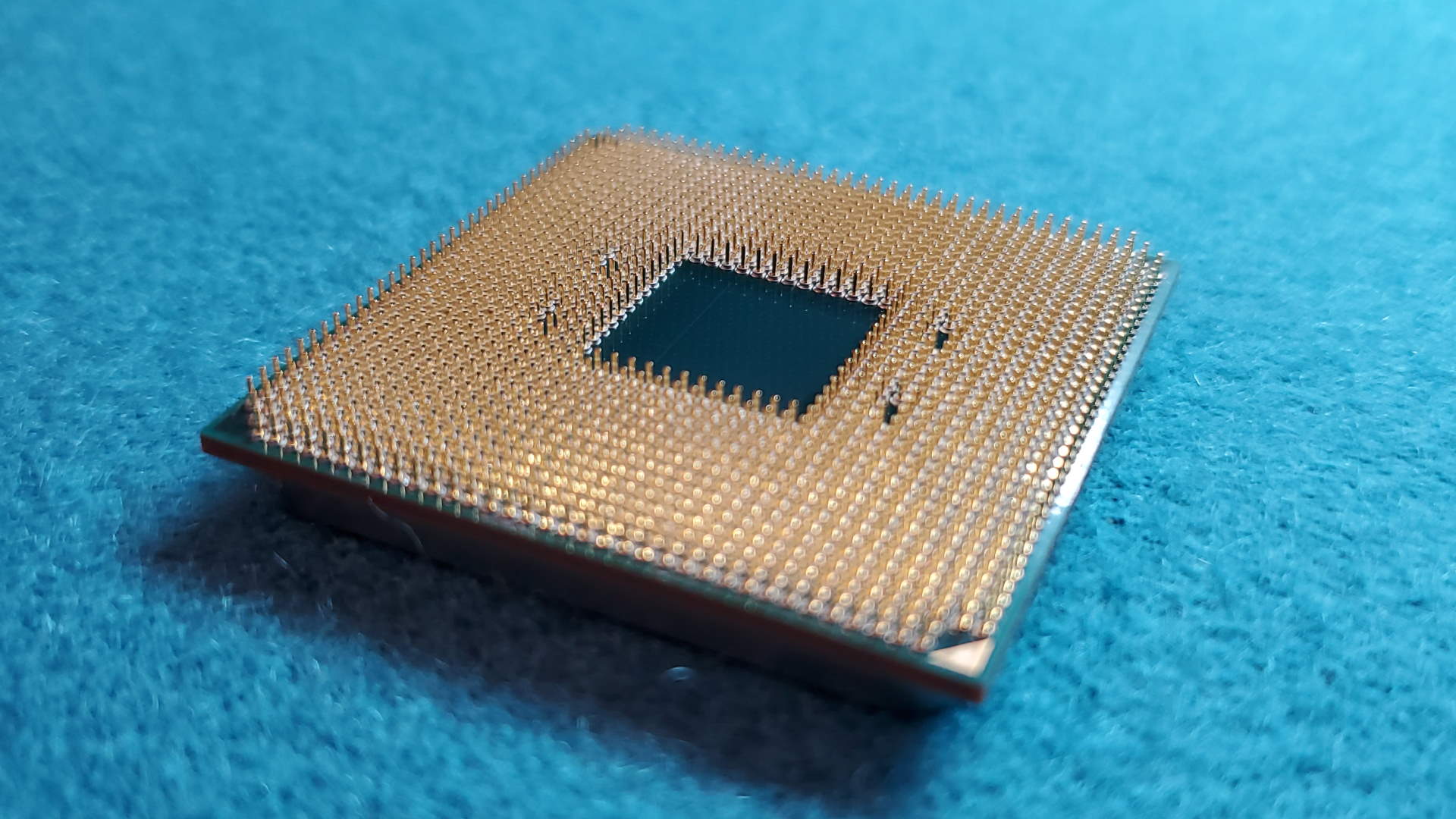
What are the Ryzen 7 5800X3D specs?
The Ryzen 7 5800X3D is architecturally identical to the standard Ryzen 7 5800X, using the same Zen 3 processor design, and therefore the same chiplet setup that has made AMD's recent generations of CPU such world-beaters. That means you're getting the same eight core, 16-thread layout in a single chiplet (so no potential inter-chiplet latency issues), but a slightly slower clock speed because of a necessarily lower voltage.
The original Ryzen 7 5800X runs at 3.8GHz with a 4.7GHz boost clock, while this new chip comes in with a 3.4GHz base and 4.5GHz boost clock. At lower voltages (1.35v as opposed to 1.5v) the clock speed as to be lower in order to remain stable under load. This is also one of the reasons the red team has nixed overclocking on the 5800X3D, though there are reports that base clock tweaking can bump speeds. We haven't had any success yet, but we'll keep playing.
Cores: 8
Threads: 16
Base clock: 3.4GHz
Boost clock: 4.5GHz
L3 cache: 32MB
3D V-Cache: 64MB
Socket: AM4
TDP: 105W
Price: $450 | £410
But AMD is gambling on that lower operating frequency being a small price to pay in terms of gaming when it comes to bumping up the total L3 cache on offer from 32MB, all the way up to 96MB.
But trebling the amount of L3 cache available to an existing CPU design, however, needs a little more finesse than simply baking it into the compute die of a Ryzen processor.
And this is where AMD's close relationship with contract manufacturer, TSMC, really comes into play. Using a new 3D packaging technique, the 5800X3D's compute chiplet, the Core Complex Die (CCD), has a new hat. It's a hat made of memory that's roughly half the areal size of the chip it's sat on top of, but contains twice the amount of L3 cache.


Though it's like a hat that's been bonded to your scalp at the molecular level, because it uses a so-called hybrid bonding approach that mixes copper-to-copper bonding with through silicon vias (TSVs) to connect the new cache die to the Zen 3 compute die. This approach creates a whole load of interconnects to ensure the data can seamlessly flow between those Zen cores and L3 cache, wherever it's situated.
Theoretically you should see an improvement in gaming performance… where the CPU might be some sort of bottleneck, anyway
This extra cache is named 3D V-Cache, and represents the first time we've seen 3D stacking used within a consumer-focused desktop CPU. It's an elegant solution, made even more so by the fact that despite the extra V-Cache die (nicknamed the L3D) sitting on top of the CCD silicon, the resulting chip is still the same height as previous gen Zen 3 CPUs.
AMD says that, in the manufacturing process, the actual Zen 3 CCD has been thinned down so that the end result is a chiplet that includes the stacked L3D on top of the traditional core silicon, yet is no taller than in a standard Ryzen 5000-series processor. That all means there's no issue about compatibility with coolers, and means AMD can use the same heat spreaders, and sockets when it comes to putting it all together.
But why would throwing a chunk more cache onto a processor have any benefit in gaming terms? The simple answer is that it's all about assets and getting access to them quickly. Modern games have lots of, and ever larger, pools of assets that need to be loaded in an instant to keep your experience smooth. That all has to be loading into, and fetched from memory. Cache memory is the closest to the processor and anything sitting in there can be made readily available to the CPU to use. And if it's not in there the processor has to waste time dipping into the main system memory to grab the necessary data.
So if you have more of the quicker, closer memory—the L3 cache—then theoretically you should see an improvement in gaming performance… where the CPU might be some sort of bottleneck, anyway. AMD has been upfront about the fact that the 3D V-Cache in the Ryzen 7 5800X3D has no impact on productivity applications, marking the chip out as a specific gaming processor.
Which brings us neatly onto the topic of gaming performance.
AMD Ryzen 5800X3D performance
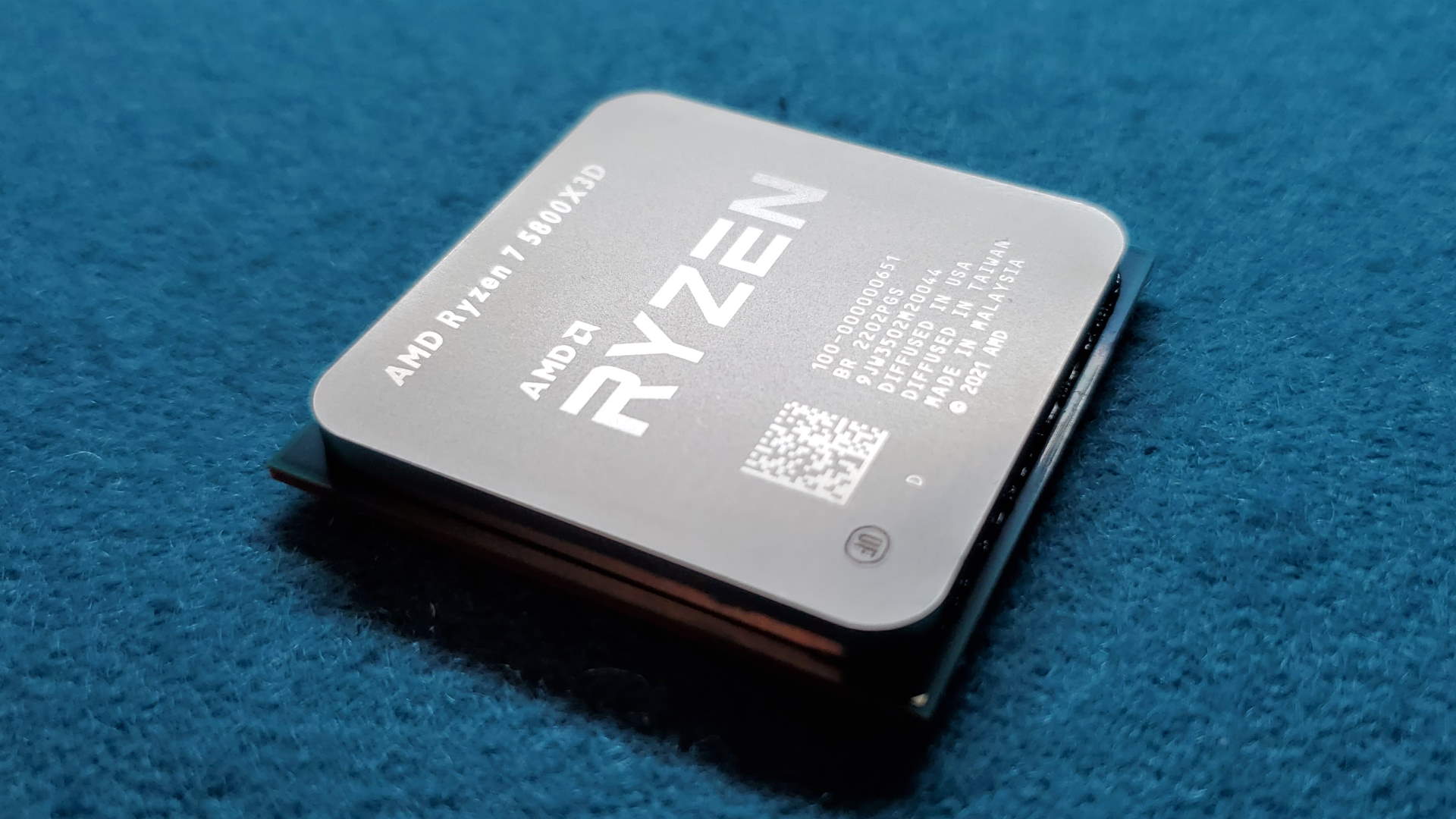
How does the Ryzen 7 5800X3D perform?
We've put AMD's finest CPU up against what the red team originally called its best gaming processor, the Ryzen 9 5950X. The rhetoric seems to have changed since launch, and AMD is now suggesting that the Ryzen 9 5900X is that chip, despite initial claims that the top 16-core 5950X was bin sorted to offer the highest performance in everything, gaming included.
We've also tested it against Intel's top processors, the Core i9 12900K and the brand new, special edition Core i9 12900KS. These are Intel's top gaming processors and a marker for where AMD and Intel's respective chips stand when it comes to hurling gaming frame rates around your screen.
We have retested the compute performance metrics to highlight the differences there, but the real meat is in the gaming speeds. We're testing at 1080p, with an Nvidia RTX 3080 FE card, to ensure our tests aren't GPU limited. This will show where there are performance gains for one CPU or another.
The catch here is that at higher resolutions the differences are seriously diminished as game performance becomes increasingly reliant on GPU performance and the speed of a CPU makes little difference beyond a certain point. But that's something we'll come back to later. For now, let's look at the actual performance.
In general, the Ryzen 7 5800X3D either essentially matches or outperforms the Ryzen 9 5950X. That's a great result considering the top Ryzen is still an expensive CPU, and more than ever just a productivity chip and little else.
1080p gaming performance






CPU performance






The Intel chip delivers 23% higher average frame rates, but with 47% higher power consumption
There are also a few times where the new Ryzen CPU outperforms the standard Core i9 12900K, which again is a great achievement. Though, for the most part, it lags behind the Golden Cove microarchitecture of the Alder Lake part when it comes to gaming. And, with the special edition Core i9 12900KS coming in with a higher clock speed again compared with the previous top Intel processor, the flagship Alder Lake CPU is able to keep Intel's claims to 'the fastest gaming processor' alive and well.
While PC gamers arguably care less about efficiency than most (after all why would you hanker for an RTX 3090 Ti to gain just a few more frames per second in your games?) it's absolutely worth considering the comparative power draws of the two CPU designs. AMD's move to the chiplet setup was a masterstroke, and its 7nm Zen 3 architecture is an impressively elegant and efficient design. That's exemplified by the relative peak wattage figures of the Intel and AMD processors.
Under full CPU load, running the video encoding benchmark of X264, the Core i9 12900KS demands 77% more power than the Ryzen 7 5800X3D. Though that is with all its performance and efficient cores running at full pelt. But even when you look at the relative power draw while gaming of the two chips, the Ryzen CPU is able to offer much lower power draw while gaming.
Taking Far Cry 6 as the example here, the Intel chip delivers 23% higher average frame rates, but with 47% higher power consumption.
One thing to note about the 5800X3D, however, is that it is a hot chip. Admittedly the 12900KS will happily hit 101°C under full core load, but at 93°C the new eight-core Ryzen CPU runs much hotter than the 16-core 5950X.
AMD Ryzen 7 5800X3D analysis
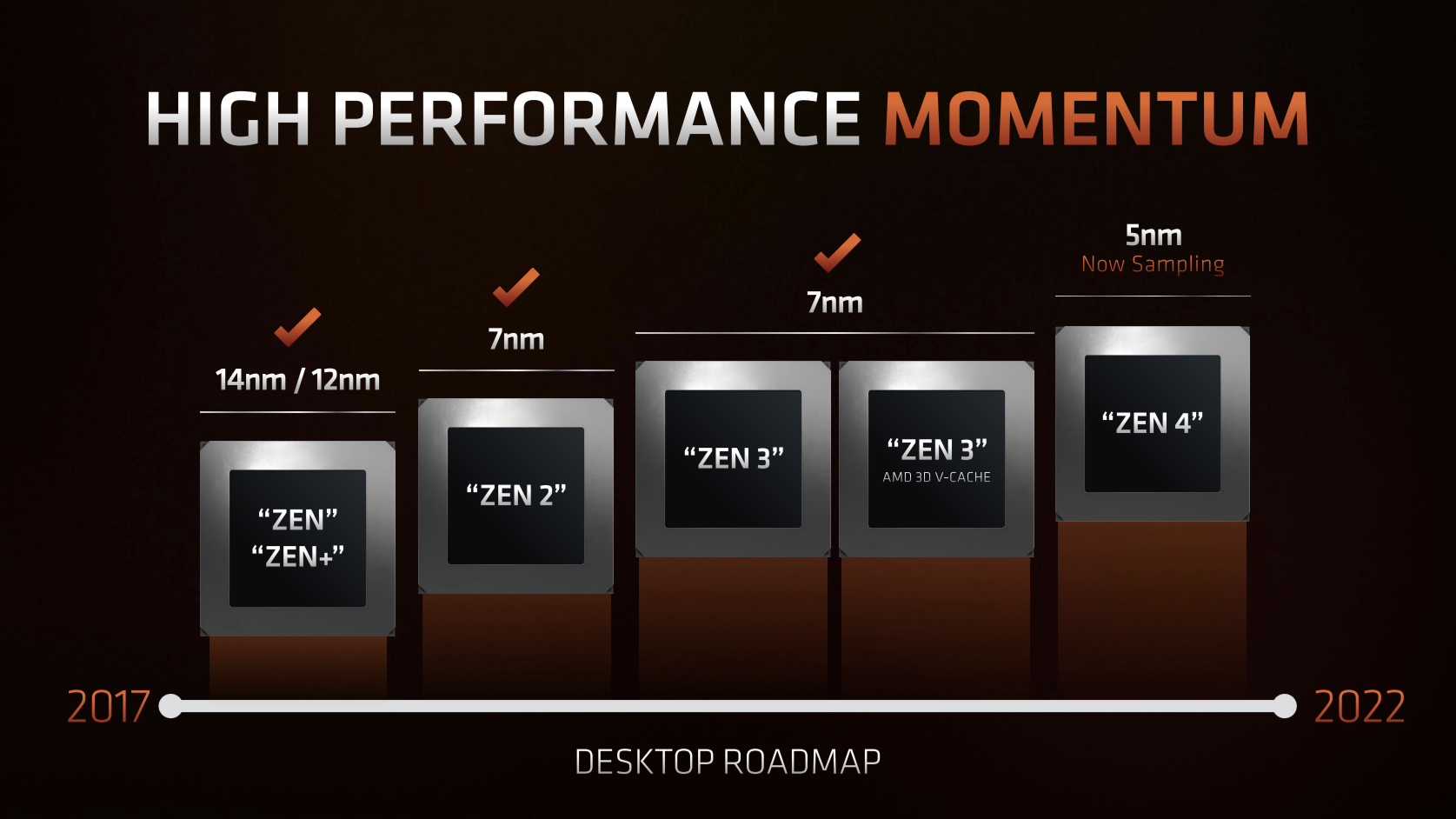
What does the Ryzen 7 5800X3D mean for gaming?
Context is king when it comes to figuring out what relevance releasing a new Ryzen 5000-series chip in mid-2022 actually has. It would be easy to dismiss the Zen 3-based 5800X3D in the face of new Zen 4 processors arriving before the end of the year, but it's almost precisely because of that this new chip has a place.
The AM4 platform, which has supported the Zen CPUs since they first arrived back in 2017, is going to be effectively retired once Zen 4 releases with a new LGA socket this year. But, given that five year heritage, there are going to be a lot of existing AMD users sitting on an AM4 system they might want to upgrade, but don't want to go through the process of replacing the entire setup.
The Ryzen 7 5800X3D is a drop-in upgrade for the majority of existing AMD Ryzen chipsets, and that makes it an easy path to improved performance for a vast range of AMD users. The Zen 4 processors arriving this year, on the other hand, require a whole new motherboard purchase—likely an expensive one initially—and also a new set of pricey DDR5 memory, too. Depending on power requirements, you may even have to think about a new PSU.
Those are the same arguments against switching to Intel's Alder Lake platform. It may have the higher gaming performance, but as an upgrade—even with a lower spec Intel chip—the platform costs are higher.
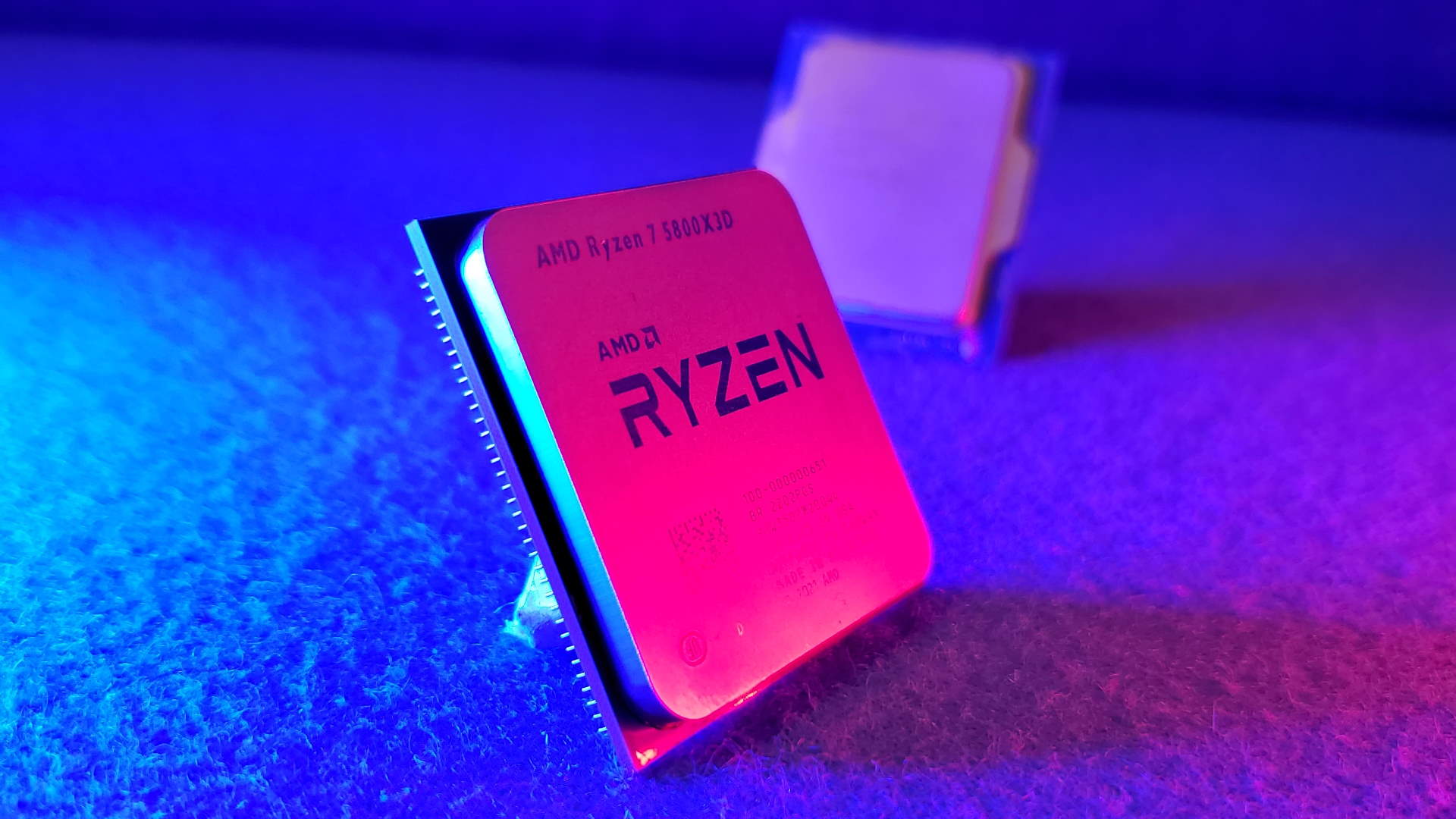
Beyond the 'good enough' point, your core processor has almost no bearing on the final frame rates your rig will deliver
The 5800X3D can get mighty close to Alder Lake's gaming frame rates, and you don't have to ditch your entire AMD setup to get there.
That's a huge plus for the AMD chip, but it still faces competition from within. Mostly because AMD's Ryzen 5000-series prices have dropped significantly in recent months. Right now, it's tough to argue that upgrading your AMD rig to a $450 5800X3D makes more sense than spending less and grabbing the $394 12-core, 24-thread Ryzen 9 5900X.
That's one of my favourite ever AMD CPUs, and its gaming performance is still damned impressive. It will also deliver incredible multi-threaded compute power, and I would bet will still look like a great chip in a couple of years, and a few CPU generations down the line.
Then we also come to the thorny issue of actually how relevant that whole 'best gaming CPU' moniker actually is in the real world. If you're spending the best part of $500 on a processor for your gaming system, there's a real good chance you're not looking to play at 1080p. You'll likely have a GPU capable of rendering happily at 1440p, and at the point games become more reliant on graphics processors than CPUs. Up at 4K, beyond the 'good enough' point, your core processor has almost no bearing on the final frame rates your rig will deliver.
If you're running at RTX 3080 or RX 6800 XT at higher resolutions then extra cache of the 5800X3D isn't going to have enough impact to make it more valuable than a 5900X. In those terms then, do you really need more than a Ryzen 5 5600X or Core i5 12600K?
AMD Ryzen 7 5800X3D verdict
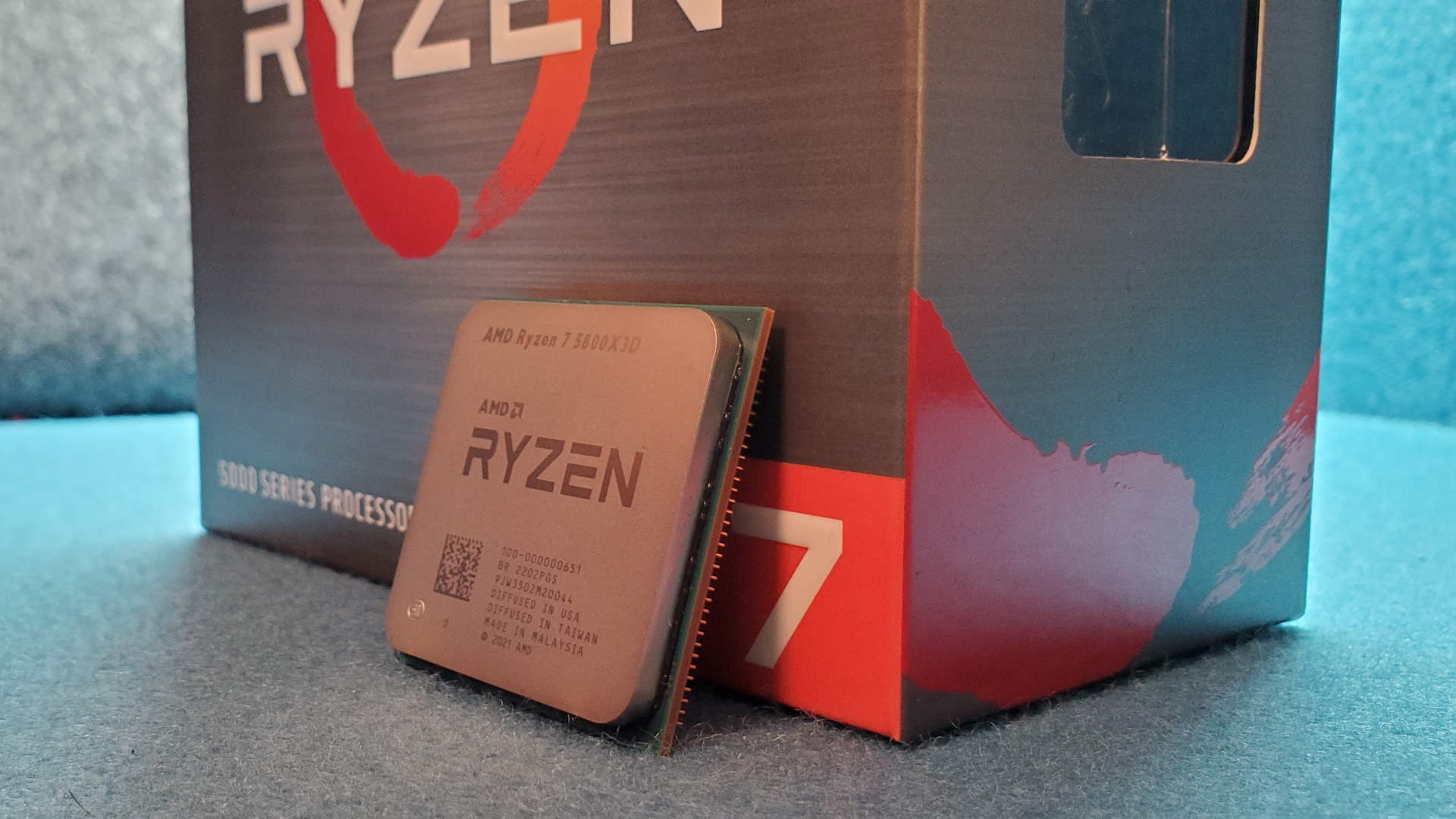
Should you buy the Ryzen 7 5800X3D?
There's a good chance the 5800X3D is a manufacturing dry-run for a 3D chip stacked Zen 4 chiplet, which would make the last Zen 3 release a smart move in total isolation. The fact the tripled L3 cache actually helps in gaming terms means you're also getting the best pure gaming processors that AMD has ever created.
It's a technically elegant, efficient CPU that delivers on its promises. It can't quite beat Intel's hulking brute of a Core i9 12900KS in the frame rate war, but it still offers the majority of AMD users an easy upgrade path to gaming performance that is not far off. And for a fraction of the price and power demands, too.
It's still not the CPU I'd recommend, however. At $450 it's too costly compared with the price crash of higher-spec Ryzen 5000-series processors, and in sole gaming terms we still struggle with the idea of overspending on a CPU when your GPU has far more say on final performance figures.
But if this is a taste of Zen 4 things to come, my palate is certainly prepped.
A technically impressive processor and a fitting epitaph for the AM4 era of AMD's Ryzen CPUs. But the 'fastest gaming CPU' is a moniker which serves marketing people more than it does us PC gamers.

Dave has been gaming since the days of Zaxxon and Lady Bug on the Colecovision, and code books for the Commodore Vic 20 (Death Race 2000!). He built his first gaming PC at the tender age of 16, and finally finished bug-fixing the Cyrix-based system around a year later. When he dropped it out of the window. He first started writing for Official PlayStation Magazine and Xbox World many decades ago, then moved onto PC Format full-time, then PC Gamer, TechRadar, and T3 among others. Now he's back, writing about the nightmarish graphics card market, CPUs with more cores than sense, gaming laptops hotter than the sun, and SSDs more capacious than a Cybertruck.
